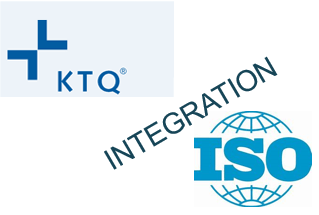Integration of ISO standards and business continuity management under the umbrella of KTQ
The "Cooperation for Transparency and Quality in Healthcare", (german: Kooperation für Transparenz und Qualität im Gesundheitswesen, KTQ), offers a voluntary certification system, according to which hospitals and other companies in the healthcare sector can be certified. Here, certification according to KTQ offers multiple advantages, as it is specifically tailored to hospitals. The standard is based on a PDCA approach with the patient at its center. This is also where the great strengths of certification according to KTQ lie: employees and patients are at the center and are core areas of KTQ. Both documentation and practice audits are conducted by medical, nursing and economic assessors. This strength also acts as a serious disadvantage for partial aspects of certification, because technical aspects remain in the background. For the inspection within the scope of the certification, about 1.5 hours are planned in the sample inspection plan for the following topics: Overview [...]




